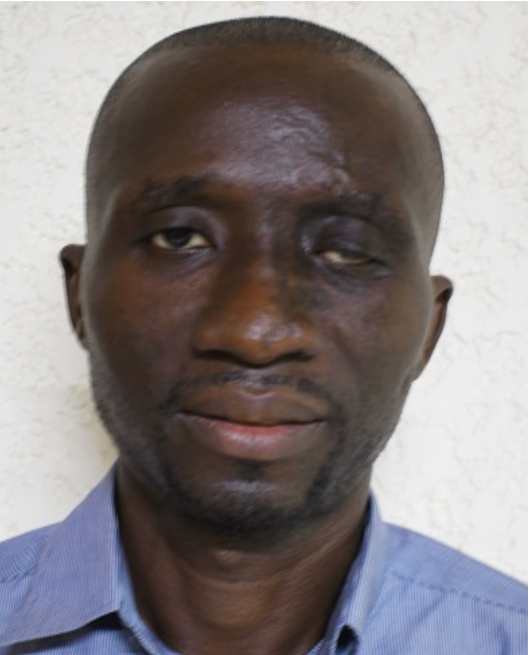By Francis F. M. Harding
William H. Whyte said, “It is difficult to design a space that will not attract people. What is remarkable is how often this has been accomplished.” Globally, over 50% of the population lives in urban areas. It has been projected that by 2045, the world’s urban population will increase by 1.5 times to 6 billion. So it is better for Sierra Leone for the Ministry of Lands Housing and Country Planning steps up to quickly plan the city for growth and provides the basic services, infrastructure, and affordable housing the expanding populations Freetown need.
Today, some 56% of the world’s population 4.4 billion inhabitants live in cities and this trend is expected to continue by 2050, with the urban population more than doubling its current size, nearly 7 of 10 people in the world will live in cities. More than 80% of the global GDP generates in cities, and urbanization contributes to sustainable growth if managed well by increasing productivity, allowing innovation and new ideas to emerge. However, the speed and scale of urbanization brings challenges, including meeting accelerated demand for affordable housing, well connected transport systems, and other infrastructure, basic services, as well as jobs.
Marketplace and cities are closely entangled concepts, especially in urban history where their relationship is often considered self-evident, to the point that it goes unquestioned. The existence of a central market is a physical core of exchange of goods between buyers and sellers. It becomes so closely and functioning of cities that a history of urbanization often reads like a tale from trade centre to commercial metropolis. A modern city is a centre of opportunities for all both rich and poor to reach their highest potentials that are governed in an inclusive, collaborative and sustainable manner. Informality pervades everyday life in Freetown the capital city of Sierra Leone especially for the poor.
Most cities in the developing world are characterised by large informal economies, evidenced by the large number of street traders in many cities, particularly in Africa like Sierra Leone where informal commerce is the major source of jobs for the growing urban poor. Nevertheless the displacement of street traders by central or Freetown City Council authority is a prevalent occurrence and it is argued that such practice result in widespread social exclusion.
Street traders are usually centrally located as the basic economic principles explain trader preference for central locations, particularly those that are strategically located on busy pedestrian routes. However such sites are also strategic to city authority and other stakeholders, and thus tensions and competition over space result. Consequently, the displacement of street traders from central locations is a widespread policy and practice adopted by government authorities in developing world cities. Displacement vary in nature, as do their impacts on traders and their activities, ranging from large scale sustained evictions to sporadic event driven removal.
The Right to the City concept was coined in 1960s by Henri Lefebvre and the Right to the City concept is experiencing a revival, despite its definitional ambiguities. The right-based perspective promoted by the Right to the City holds significant implications for street traders. Street traders are highly dependent on contested urban public spaces, and their frequent displacement in favour of other interests arguably leads to social exclusion. A rights-based approach to urban management is thus a potential tool through which the disenfranchisement of street traders in urban public space can be addressed, but it portends significant challenges.
Sani Abacha Street, very prominent street has been occupied by traders which had become eye sore, a place where people have deliberately situated as markets and a parking lot for big trucks on hired trips to the provinces which blocked vehicular traffic. Sani Abacha Street, densely populated shopping area in Freetown, was expected to be among the streets cleared to maintain free flow of traffic. The plan which was announced by Sierra Leone Road Transport Authority in December 22012, was designed to improve road safety and reduce congestion.
In May 2013, Freetown city Council announced that all street traders at Sani Abacha Street should leave. There are two types of street trading, the fixed vendors and mobile vendors. The informal economy has been a longstanding subject of debate, with the concept continuously evolving over the years. Street trade and the informal economy have grown in significance over the years especially in the developing world due to a combination of factors, in particular as a response to emerging economic structures which provide a vital reason behind the continued expansion of the informal economy.
Sani Abacha Street Market is of unique significance with regards to the informal economy. However, in an attempt to sanitize the city, authority adopted a zero tolerance policy to street trading, which led to the displacement of street traders located around Abacha Street Market in Freetown, one of the largest concentrations of street trade in Freetown, to alternative locations.
The economic use of urban public space cannot be overemphasised, as the association of commercial activities with urban public space is firmly rooted in the origins of the concept. The Greek Agora was commercially oriented, as the Agora was first and foremost a market place; so also in the medieval city, the main public spaces were market places and the city as a whole served as a market.
Street trading organizations are often looked down upon. First by political commentators, who see street trader leaders as opportunists. But they play very important role in the informal economy in the country. On the aftermath of the August 10th reshaped the political landscape of the street trading. Progressive politics, dreams of inclusion and liberal rights to trade in the city, even if marred with pragmatic ideas on how to define and negotiate trading spaces at a local level, are left wanting, in the face of legitimate, but individualistic and divisive business concerns.
Building city that work inclusive healthy, resilient, and sustainable requires intensive policy coordination and investment choices as NASSIT had is investing both national and local government have important role to play to take action, to shape the future of development and to create opportunities for all. Sani Abacha Street successive governments have tried and failed to move Sani Abacha Street of trading. Sani Abacha Street which was formerly known as Kissy Street is the main route that leads to the center of the city from East and lead the center to the East. The prevailing trend in urban development is like the space has being privatized.
If we take the politics of informality adopted by most traders in various forms and degrees, it seemed important to have a better understanding of each trader collective as organizations to competing political market where attracting new members is key to gain legitimacy and traction in the eye of the municipality.
I am worried if we want to succeed in the beatification process we need the Freetown City Council and the FCC Mayor Madam Yvonne Aki Sawyerr. The Ordinance to Regulate Trading in the streets of the Municipal City of Freetown1937, Chapter 70 of the Freetown Street Trading.
In the emerging Sewa Grounds Market in Freetown that is being developed, redeveloped and redesigned as a modern megacity, a few questions come to mind: How can everyday Freetonians survive and thrive in the city where they have no place and they can ill afford for the next four months? Where have they Freetown for everyday people and for everybody?













